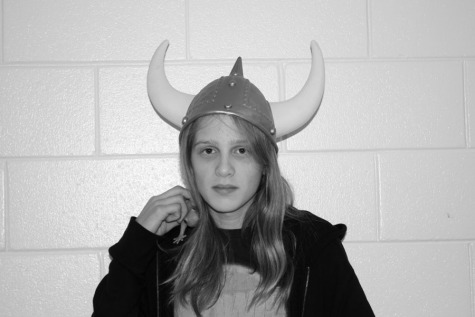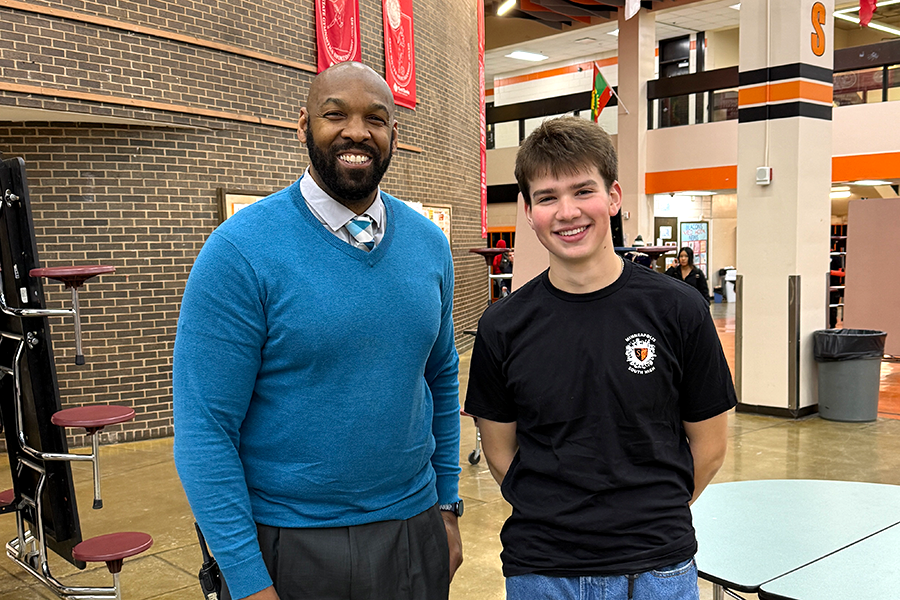Progressive education succeeds in improving school atmospheres
March 11, 2014
“You like it here, you’re going to like it in prison,” said Sabin Keller, a freshman who has strong opinions about the school’s environment. “There’s a freakin maze on the second floor, the fluorescent lights make my head hurt, and the pink walls are just driving me crazy. It just teaches students how prison is.”
South students have experience with a substandard school atmosphere. Prison-like architecture, constant supervision, and unceasing reminders of authority have conditioned us to think in a subordinate mindset. “The lack of sunlight for one thing is [a problem].” said freshman Emma Sweetland. “There have been studies that show that more natural light is better for you, first of all, and having a lack of that is definitely something that can contribute to a depressing atmosphere.”
However, not all schools have such a negative atmosphere. Progressive approaches to education try to work against prison mentality and improve school’s atmospheres by empowering youth. Though they may seem like a fantasy compared to public education, many progressive schools exist in Minneapolis.
The Gaia Democratic School in Minneapolis promotes a positive atmosphere by having students participate in meetings where rules are changed, voted on, and abolished daily. Starri Fawn Hedges, the Executive Director of Gaia, spoke about their philosophy. “What we do is we look at education completely differently. We provide a space where people of all ages come and learn together…we have a huge emphasis on each individual and how unique and special each individual is. ”
Other progressive school structures, like Waldorf and Montessori schools, take a more hands-on and arts-based approach. Sylvia Eisenbeis, a senior who attended Minnesota Waldorf School, said that without that kind of support she might not have excelled as much in writing. “It’s trying to nurture people’s creative sides, basically…I don’t think I would probably have the same writing skills that I have now, or creativity, really.”
Second Foundation school, which was recently closed before reopening as Gaia, also fostered an arts-based curriculum in the Twin Cities. “It was a lot freer,” said freshman Skylar Onsrud, who attended Second Foundation. “A lot of the classes were philosophy or art classes which you couldn’t get here. And you could go to whatever classes you wanted to.”
Democratic school philosophy includes equal participation in decision-making as one of its pillars, and many schools take that mean having a loose class structure with no required classes. Summerhill School, a democratic school in England and the oldest existing democratic school follows this interpretation. Their founder, A.S. Neill, said “To hell with arithmetic,” which reflects his opinions on having required mathematics classes. Students at Summerhill may choose which, if any, classes they attend.
Gaia has a similar approach to class structure. “Everybody has their own path.” said Hedges. “They have full choice about what classes they take and how they learn…the kids pick and choose what they want to do, they have their own plan and goals, none of it is okayed or approved by the adults. It’s not the adults job to tell them where to be, it’s our job to help them along and to get them to where they want to be.”
Architecture plays a big role in a school’s environment as well. Eisenbeis said, “It feels really different when you walk in [to Waldorf school] because the walls are painted in pastel watercolor. There’s art everywhere around the building.” This is a swift departure from the harsh industrial architecture of South. “The architecture [in Waldorf] is very rounded…we have kind of curvy walls, and the tables are often not pointed, especially for the lower grades.” Eisenbeis said.
Gaia tries to have a more fostering architecture as well. “We have no fluorescent lights, or desks that are individual.” said Hedges. “We have couches, pillows, blankets, Yoga mats, gaming chairs … We attempt to make the environment as comfortable and as least institutional as possible. When you walk through a building, and you have to go through security and all that, there’s an element of that system that is getting you ready for prison.”
As radical as these progressive schools may seem, South has it’s own progressive schooling program, Open. While it may not be as extensive as Gaia or other democratic schools, it is still seen as more laid-back than conventional schooling. “It’s more about taking control of your own learning than just getting stuff thrown at you.” said Sweetland. “You have more freedom in what you’re putting into your assignments and what you actually get out of them, too.”
Mary Manor, an Open English teacher, discussed open schooling philosophy: “Open schooling talks about attending to the whole child. It’s not just about passing knowledge down to students, but for students to find a way to discover knowledge on their own. School isn’t just about getting information, it’s about teaching you (students) to be good citizens and how to participate in the wider world.”
While the Open program offers more choices to students about their learning environment, it is not a complete democracy like Gaia, and rather tries to give students more control of their learning through smaller choices. “Open schooling does focus on democracy in education, which doesn’t mean you get to vote on whether or not you want to learn about history today. But it does mean that there is choice in a controlled way.” said Manor. “For instance, in Ms. Ockman’s class you get to choose a book for a lit circle. That’s not every book in the world, but you have the choice of a certain number of books that she as an educated professional has put together.”
The Open program is not alone in trying to improve the atmosphere of South. Other initiatives, like Project Open Windows, are aiming to make South more welcoming as well by fighting the problem at it’s heart- South’s architecture. Project Open Windows’ goal is to brighten our otherwise harsh and monotone halls with pieces of multimedia art that will take the form of windows frames. Inside the frames will be artwork by South students and staff that shows what changes they wish to see in the school community. While South may not adopt a ‘to hell with arithmetic’ style of education anytime soon, we can see changes around the corner that will make our school a more welcoming place.





